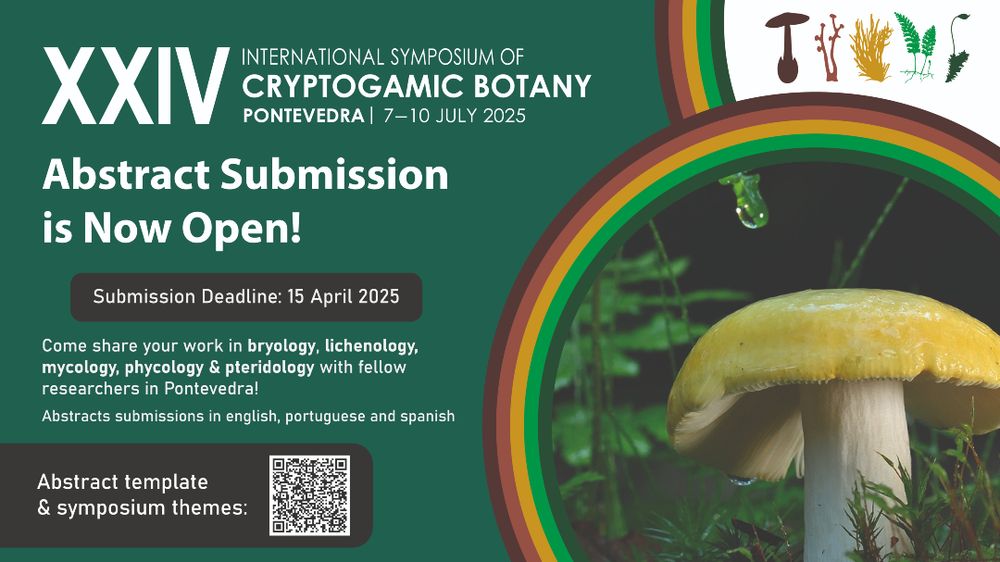
Thrilled and honored to be a keynote speaker at #FloraMac2025 🏝️🌻🌿 a fantastic conference with great colleagues in a truly unique setting! Don’t miss it! floramac2025.weebly.com
13.03.2025 15:46 — 👍 4 🔁 0 💬 0 📌 0@jairopatinolab.bsky.social
Botanist (and bryologist) passionate about the ecology, evolution, and conservation of island floras | Senior researcher and PI of the #iEcoEvoLab at @ipna.csic.es ... life is better in flip-flops!

Thrilled and honored to be a keynote speaker at #FloraMac2025 🏝️🌻🌿 a fantastic conference with great colleagues in a truly unique setting! Don’t miss it! floramac2025.weebly.com
13.03.2025 15:46 — 👍 4 🔁 0 💬 0 📌 0At the national level, you can also check the following interview www.csic.es/es/actualida... @ipna.csic.es @csic.es #iEcoEvoLab 🧵 8/8
10.03.2025 23:15 — 👍 1 🔁 0 💬 0 📌 0
Our study is already receiving great regional coverage! Check out this interview in Spanish by @veropaves.bsky.social discussing our findings:
👉 www.epe.es/es/espana/ca...
The impact of coastal tourism and land-use changes on plant extinctions in the Canary Islands is a key takeaway! 🧵 7/8

These findings underscore why islands need urgent conservation efforts. Studying life-history traits can help predict and prevent future losses, before more species vanish unnoticed. Photo credit: #JavierMartínCarbajal 🧵 6/8
10.03.2025 23:15 — 👍 1 🔁 0 💬 1 📌 0
Lotus gomerythus. Photo credit: Javier Martín Carbajal
A striking example? Lotus gomerythus, a plant species that exhibited many of the traits associated with high extinction risk, went extinct in nature during our study’s publication process. Photo credit: #JavierMartínCarbajal 🧵 5/8
10.03.2025 23:15 — 👍 1 🔁 0 💬 1 📌 0
What drives extinction events? Key factors include: Invasive herbivores, island age, elevation, and human population pressure. Certain traits also increase extinction risk: Endemism, vertebrate pollination, nitrogen-fixation and zoochory (seed dispersal by animals) are among thse key traits 🧵 4/8
10.03.2025 23:15 — 👍 1 🔁 0 💬 1 📌 0
These figures of plant extinction are well above the expected global background extinction rate. Extinction patterns aren’t random. We detected a recent coastal extinction hotspot linked to socioeconomic changes since the 1960s, which have reshaped and treated island ecosystems 🧵 3/8
10.03.2025 23:15 — 👍 0 🔁 0 💬 1 📌 0
Our paper onlinelibrary.wiley.com/doi/10.1111/..., led by #RaúlOrihuelaRivero and supported by an international team, documentes plant extinction since Linnaeus' Species Plantarum. The results? Concerning! We found 168 extinction records for 126 taxa, with 13 global and 155 local extinctions 🧵 2/8
10.03.2025 23:15 — 👍 1 🔁 0 💬 1 📌 0
New Paper 🚨 Are species extinctions accelerating in the Anthropocene? And why are some species more at risk than others? Our latest research, published in @globalchangebio.bsky.social explores plant extinctions in Macaronesia, one of the world's most biodiverse island regions. A thread 🧵👇
10.03.2025 23:15 — 👍 10 🔁 7 💬 1 📌 0
#IPNApaper 'Geographic and Biological Drivers Shape Anthropogenic Extinctions in the Macaronesian Vascular Flora' (@globalchangebio.bsky.social)
onlinelibrary.wiley.com/doi/10.1111/...
Co-authors from IPNA: Raúl Orihuela, Javier Morente, @jairopatinolab.bsky.social, @avalido.bsky.social

Exciting milestone for the #iEcoEvoLab! Our first post celebrates the first PhD paper of #RaúlOrihuela-Rivero, congratulations for great work and leadership! Stay tuned for more on the paper and other lab updates in the coming days! @ipna.csic.es
01.03.2025 21:48 — 👍 9 🔁 2 💬 0 📌 0
Calling all researchers!🌿
Abstract submission for #ISCB2025 is now OPEN!
Share your work in mycology, lichenology, phycology, bryology and/or pteridology with fellow researchers, this July in Pontevedra (Spain)
🗓️Submit by April 15th
Check our website!